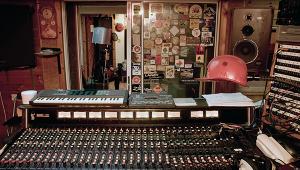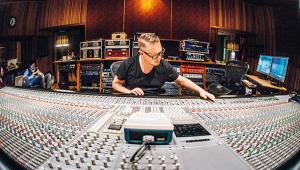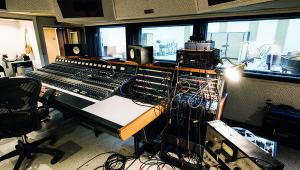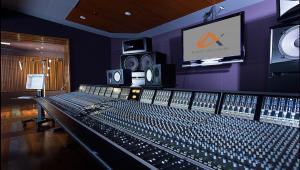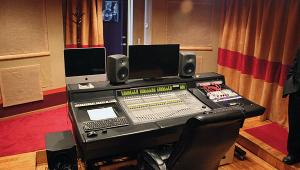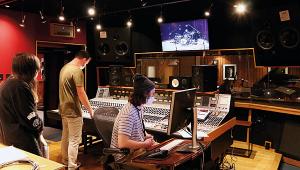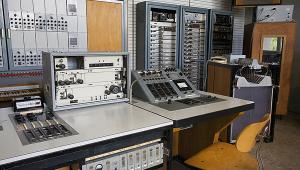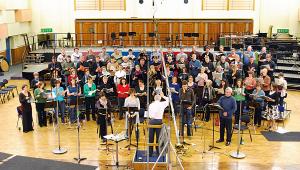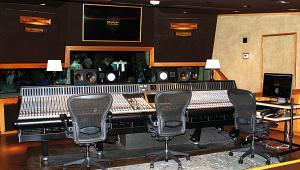Quonset Hut Studio Page 2
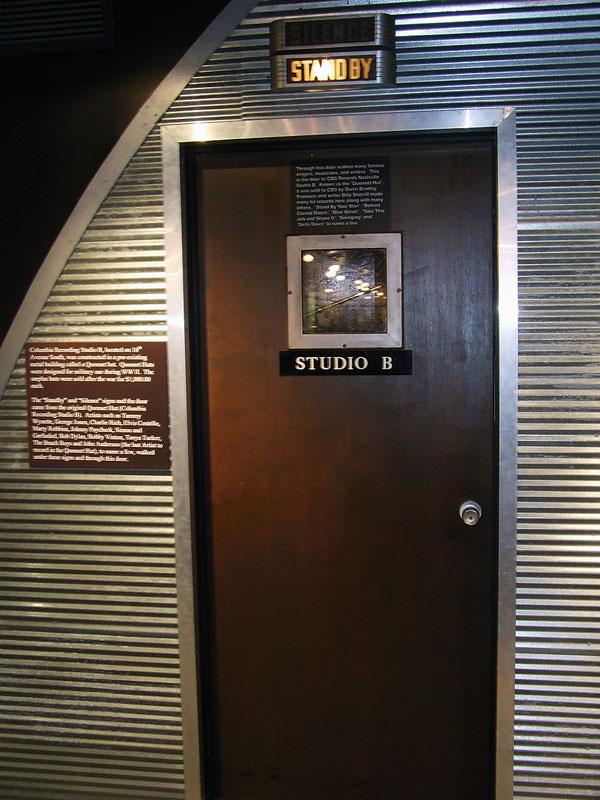
Bring The Noise
In search of a wider audience, the song lyrics became more refined and piano and strings replaced the dobros and banjos. The sound he invented was dubbed ‘countrypolitan’. Patsy Cline was one of his successful clients, as were both Brenda Lee and Kitty Wells.
One of the many innovations credited to the Quonset Hut is the invention of the fuzz-tone. Apparently, in 1960 an engineer called Glenn Snoddy was working on a Marty Robbins song called ‘Don’t Worry’ and failed to notice that a transformer had blown in the recording console channel that was being used to record a six-string bass part performed by session guitarist Grady Martin.
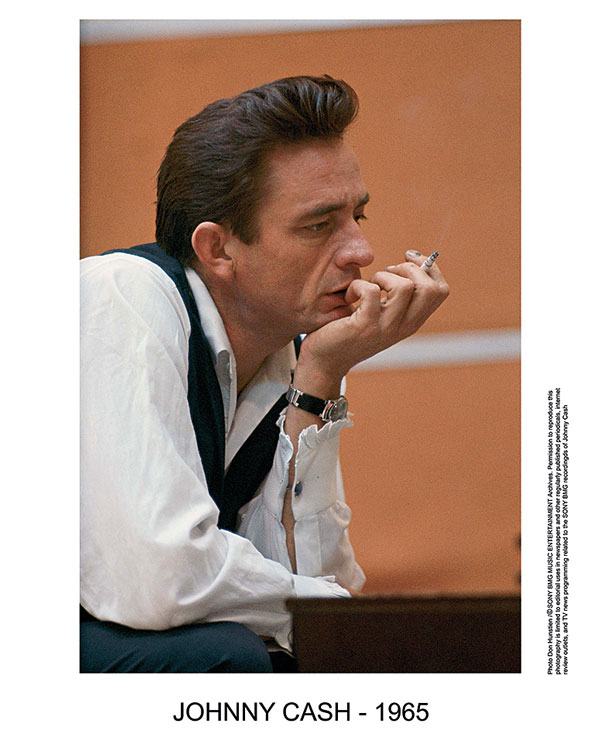
Johnny Cash pictured in 1965. He recorded ‘Ring Of Fire’ at the Quonset Hut after it was renamed Studio B
When Martin began to play his solo about a minute-and-a-half into the song, the bass produced a heavily distorted noise. Robbins and producer Don Law liked this novel, new sound and so decided to keep the bass track as it was.
Pedal Power
‘Don’t Worry’ was released on the 6th of February 1961 and became a big hit, spending ten weeks at No 1 on the Billboard country singles chart and peaking at No 3 on the pop singles chart. Snoddy set aside the malfunctioning channel strip for use in the future in case anyone asked him to replicate the sound. Later that year Grady Martin revisited it on an instrumental single called ‘The Fuzz’, which is where the effect’s name originated.
Soon Snoddy was receiving more requests for the ‘fuzz’ sound than he could accommodate, so he collaborated with an engineer at WSM Radio called Revis V Hobbs and built a standalone device that could replicate the distinctive ‘fuzz’ distortion. Together they came up with a compact transistor-based circuit housed in a small metal box with a footswitch that allowed users to activate the effect when desired. Snoddy pitched their invention to Gibson, which introduced the device as the Maestro FZ-1 Fuzz-Tone in 1962.
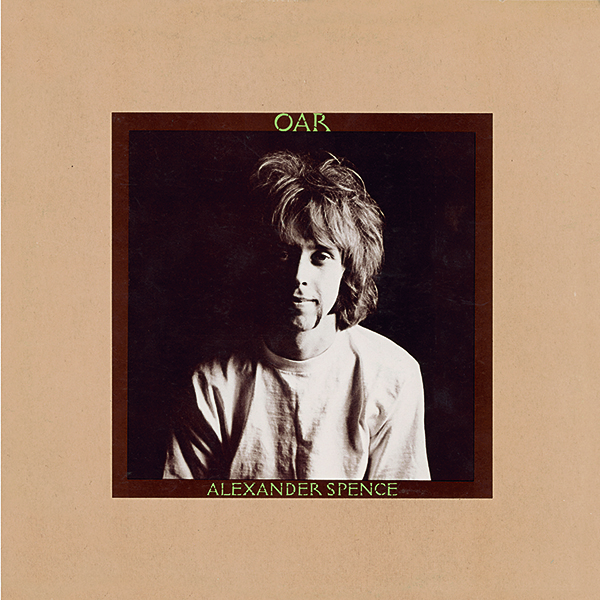
Moby Grape’s Skip Spence on the cover of his solo album Wow, released in 1969 on the Columbia label
On February the 1st of the same year, The Bradley brothers sold their stake in the 16th Avenue South building to Columbia Records who tore it down and rebuilt it as Columbia Studio A, with the Quonset Hut becoming Studio B. Bradley’s team still used it, though, and here’s a brief list of just some of the facility’s illustrious clientele: Johnny Cash, Bobby Helms, George Jones, Jerry Lee Lewis, Loretta Lynn, Roger Miller, Marty Robbins, Charlie Rich, Tammy Wynette, The Beach Boys, The Byrds, Bob Dylan, Simon & Garfunkel and Gene Vincent. Not too shabby, huh?
Bradley was inducted into the Country Music Hall Of Fame in 1974 and, although he officially retired in the early 1980s, he continued to work on chosen projects, including k.d. lang’s 1988 album, Shadowland. He eventually passed on the 7th of January 1998 at the age of 82.
The Quonset and Studio A survived until 1982 when the facility was closed by Columbia and gutted for office space. And that would have been that if not for musician and industry mogul Mike Curb, owner of Curb Records, who bought the building that had housed our Nashville Studio in 2009, restored it to its prior function as a recording location and bequeathed it as a facility to Belmont University as part of the Mike Curb College of Entertainment and Music Business.
So, students learn their trade there today, among the ghosts of such legends as Skip Spence, the founder and guitarist of San Francisco psych-rockers Moby Grape who lost the plot in 1968 when trying to record the band’s second LP, Wow, in New York.
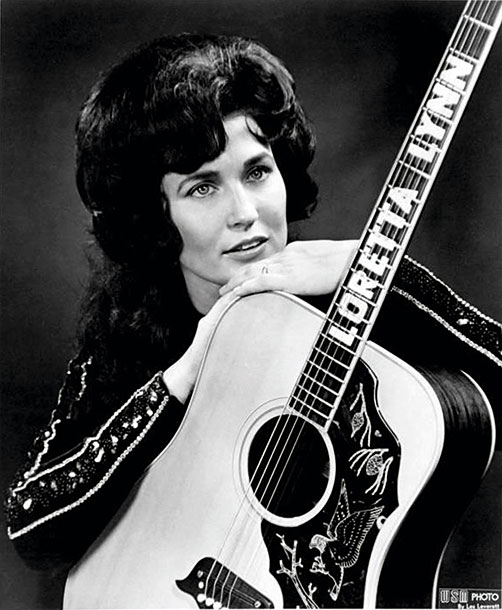
Loretta Lynn, who recorded hits such as ‘The Other Woman’ and ‘Dear Uncle Sam’ at the studio
Pyjama Prodigy
Over-stoked on LSD, Spence tried to murder his bandmates with a fire-axe and was banged up in Bellevue Hospital for six months, diagnosed with schizophrenia. On his release, he hopped on a motorbike while dressed in his pyjamas and drove to Studio A where he recorded his only solo LP, the legendary Oar, all on his own except for recording engineer, Mike Figlio. Figlio kept the tapes running at all times, to record everything Spence did.
The majority of the tracks were recorded using only a three-track recorder and it’s a work of troubled genius, every note the match for, say, Syd Barret’s equally-troubled The Madcap Laughs.
Skip Spence died in 1999 aged 52. Oh, and as for Willie Nelson, who introduced all the craziness in this feature, at the time of writing he’s still going strong at the ripe old age of 90. Not so long ago he quipped: ‘Youngsters need to start thinking about what kind of world they are going to leave for me and Keith Richards’. Dude!
